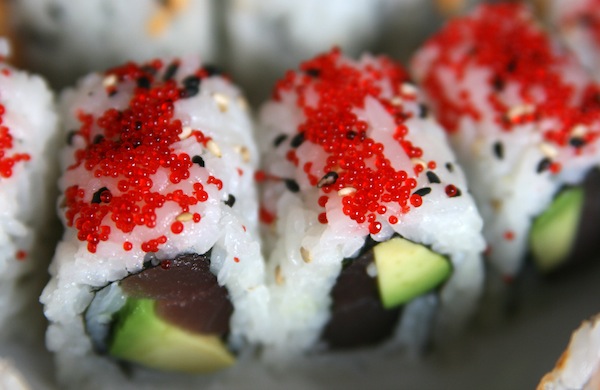
The swirling circles made by perfectly formed sushi rolls aren’t complete unless they’re accented by the bright spheres of tobiko. These candy-colored beads are part of what make the platters at Kansas City sushi restaurants so aesthetically appealing. But what are they?
The eye-catching embellishments are actually the roe of the Japanese flying fish, a sleek and swift dynamo that earns its name by breaking the water’s surface and soaring over the ocean for up to 200 meters before plunging back down. Although these acrobatics are striking, the flying fish’s vibrant roe are what draws in diners. Their natural flaming-orange pigment creates a stunning contrast against dark strips of nori and white rice. However, because they absorb color and flavor well, artful chefs often infuse roe with various ingredients to alter their appearance, creating tobiko that range from squid-ink black to wasabi-inspired neon green.
Aside from their beauty, the tiny eggs pop pleasantly on the tongue once bitten, and their texture—not to mention their brine and umami flavors—are difficult to imitate. This doesn’t mean that restaurants don’t try for cheaper substitutes; masago, roe from the unremarkable capelin, is often dyed orange and swapped for tobiko, but the lack of crunch should distinguish it from tobiko.
However, many restaurants in Kansas City, including Sakura and Drunken Fish, insist upon the real thing, garnishing their sushi rolls with the beautiful roe. But the roe is a delicacy in its own right, and has no issue taking center stage, whether cradled in a sliced cucumber or piled on a bed of sushi rice.
Photo: Christmas Maki by Quinn Dombrowski under CC BY-SA 2.0